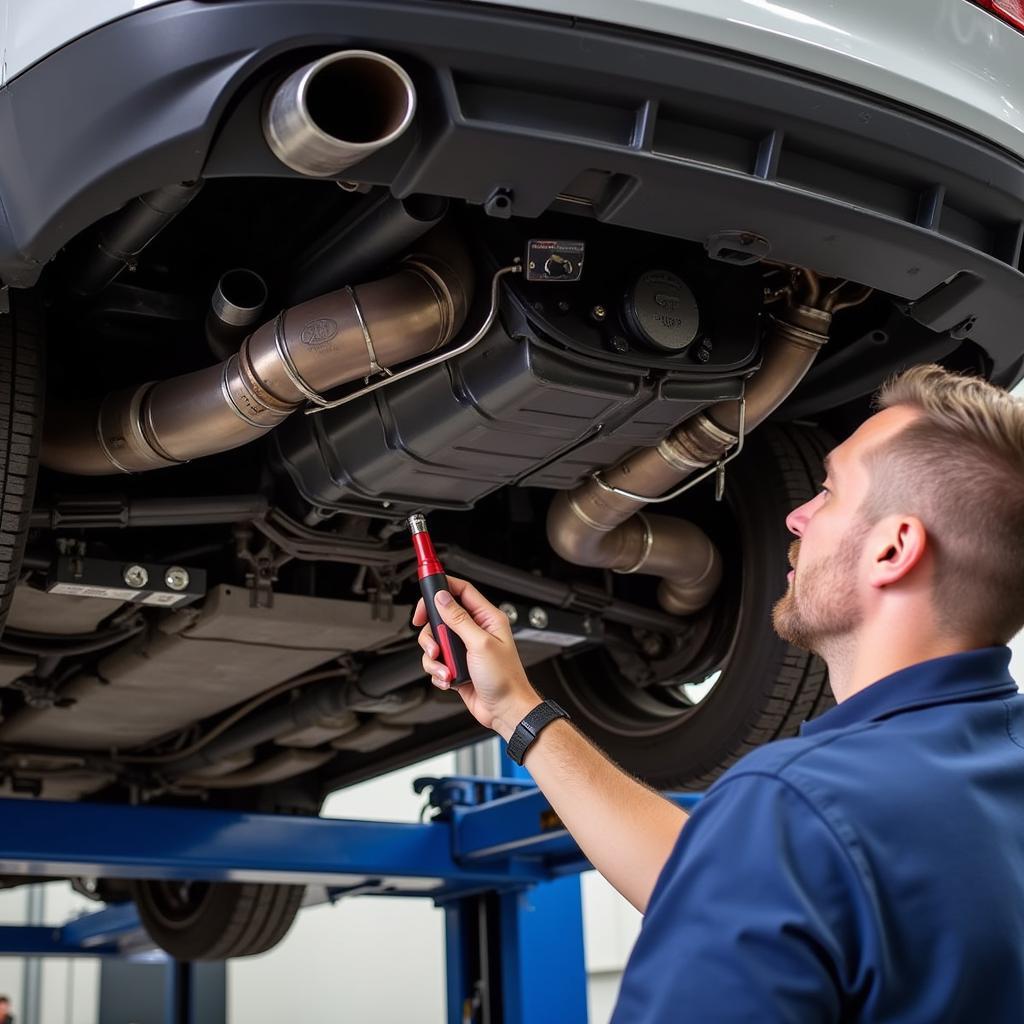Your cart is currently empty!

2013 VW Passat TDI Check Engine Light Code P1006S: A Comprehensive Guide
The dreaded check engine light. It’s a universal symbol of automotive anxiety, and when it illuminates on your 2013 VW Passat TDI, displaying the cryptic code P1006S, you’re likely left wondering what’s wrong. This guide will demystify the P1006S code, providing you with the knowledge to diagnose and potentially fix the issue, whether you’re a car owner, a mechanic, or an automotive technician.
Understanding the P1006S Code in Your 2013 VW Passat TDI
The P1006S code specifically relates to the diesel particulate filter (DPF) regeneration process. Your Passat TDI, like many modern diesels, is equipped with a DPF to trap soot and other harmful particulates from the exhaust gases. Periodically, the DPF needs to go through a regeneration cycle to burn off these accumulated particulates, preventing clogging. The P1006S code indicates a problem with this regeneration process. Often, this is due to frequent short trips that prevent the engine from reaching the optimal temperature required for regeneration.
Common Causes of the P1006S Code
Several factors can contribute to the P1006S code in your 2013 VW Passat TDI. Here are some of the most common culprits:
- Frequent Short Trips: As mentioned earlier, short trips often prevent the engine from reaching the necessary temperature for DPF regeneration.
- Faulty DPF Pressure Sensor: This sensor monitors the pressure differential across the DPF, providing crucial data for regeneration control. A malfunctioning sensor can trigger the P1006S code.
- Blocked DPF: In some cases, the DPF itself can become excessively clogged, hindering regeneration.
- Issues with the Regeneration Control System: Problems with the engine control module (ECM) or other components involved in the regeneration process can also trigger the code. This includes wiring harnesses and connectors.
Diagnosing and Fixing the P1006S Code: A Step-by-Step Guide
- Retrieve the Diagnostic Trouble Codes (DTCs): Use a compatible OBD-II scanner to confirm the presence of the P1006S code and check for any other related codes.
- Inspect the DPF Pressure Sensor: Check the sensor for any signs of damage or blockage. A visual inspection is often the first step.
- Check for Exhaust Leaks: Leaks in the exhaust system can disrupt the DPF regeneration process. Thoroughly inspect the entire exhaust system, from the DPF back.
- Forced DPF Regeneration: Using a diagnostic scanner, you can initiate a forced DPF regeneration. This process elevates the exhaust temperature to burn off the accumulated soot.
- DPF Cleaning or Replacement: If the DPF is excessively clogged, cleaning or replacement might be necessary.
 Using OBD2 Scanner on 2013 VW Passat TDI
Using OBD2 Scanner on 2013 VW Passat TDI
How Can I Prevent the P1006S Code?
Preventing the P1006S code involves understanding the DPF regeneration process and adapting your driving habits accordingly. Occasionally take your Passat TDI for longer drives at highway speeds to allow the engine to reach and maintain the optimal temperature for passive regeneration. This will help prevent soot buildup in the DPF.
“Regular highway driving is crucial for maintaining a healthy DPF. Think of it as giving your Passat TDI a good workout.” – Dr. Michael Schmidt, Automotive Engineer
 Mechanic Inspecting Exhaust System on a Lift
Mechanic Inspecting Exhaust System on a Lift
Conclusion: Taking Control of Your 2013 VW Passat TDI’s Health
The 2013 VW Passat TDI check engine light code P1006S can seem daunting, but with a clear understanding of its causes and solutions, you can effectively address the issue. By following this guide and performing regular maintenance, you can keep your Passat TDI running smoothly. For assistance or specialized tools, feel free to contact us at VCDSTOOL at +1 (641) 206-8880 and our email address: vcdstool@gmail.com or visit our office at 6719 W 70th Ave, Arvada, CO 80003, USA.
FAQ
- What does the P1006S code mean? It indicates a problem with the diesel particulate filter (DPF) regeneration process.
- Can I drive my car with the P1006S code? Yes, but it’s advisable to address the issue promptly to prevent further complications.
- How much does it cost to fix the P1006S code? The cost varies depending on the underlying cause, ranging from a simple sensor replacement to a DPF replacement.
- How can I prevent the P1006S code from recurring? Regular highway driving and proper maintenance are key.
- Is the P1006S code specific to VW TDI engines? While the specific code might differ, the underlying DPF regeneration issues are common in modern diesel vehicles.
- What are the symptoms of a clogged DPF? Reduced engine performance, increased fuel consumption, and the illumination of the check engine light are common symptoms.
- Do I need special tools to diagnose the P1006S code? An OBD-II scanner is necessary to retrieve the diagnostic trouble codes.
by
Tags:
Leave a Reply